
Cross-regional Workshop on Capacity-building for LIFE in Asia, sub-Saharan Africa and Arab States: Adult (15+) Literacy in Multilingual Contexts
29 September – 2 October 2009
Addis Ababa, Ethiopia
Introduction
Hand written or hand-copied materials in Arabic and Ajami (written Hausa in Arabic Alphabet) were available long before colonial period, but were very expensive to produce, and the cost of acquiring education, in time and money, had made reading an expensive luxury. However, with the spread of printing in 1930 in Northern Nigeria, written communication in the three major languages-Arabic, Hausa, and English as well as Ajami, reached high standard and available to a much larger portion of the population.
The need for literacy among the lower and middle classes grew, that is more types of people learned to read. The ability to read became less of a luxury and more of a necessity, eventually literacy spread, as did education indeed. This also gave room to the development of independent publishing and printing houses almost in all major cities of Northern Nigeria. This development gives birth to the establishment of my company: “Gidan Dabino Publishers” in 1990.
As more people learned to read in Arabic, Hausa, Fulfude, Kanuri and English, new ideas germinated and spread; and cross-pollination of ideas occurred which gave us the opportunity to publish more than 3000 pamphlets and materials books of different sizes and volumes with various titles that touched on areas where we have dearth of books (some have been indicated in Appendix 1). Even non-Hausa speakers like Dr. Bukar Usman, OON, and S. Kashinbila have written books both in fiction and non-fiction categories in the Hausa language. .
Today, Gidan Dabino Publishers International as a media outfit has representatives in Nigeria (Abuja, Gusau, Kaduna, Sokoto and Zaria) and in Niger Republic (Maradi, Zinder and Niamey). And presently, we are working very hard to have our representatives in Douala and Younde in Cameroon as well as in Accra, Ghana. This will give us an effective spread across West African and facilitate promotion of indigenous publishing practices, especially among Diasporic Hausa.
Education
We are aware that the term ‘education’ comprises both formal and informal provisions. Formal education is a structured, planned and executed program of learning in accordance with a prescribed syllabus and plan. Its example are the types of education obtained from Primary and Secondary Schools, Polytechnics, Universities. , Informal education refers to that which is neither systematically structured nor properly designed. This includes on-the-job training, community learning resources, As publishers, we see our role as facilitate of the both formal and non-formal educational process.
Printing and Publishing Houses
There is, perhaps, no better way to assess the history and growth of any mass medium especially printing and publishing in the society than through the functional plasticity-its functional position. This is because it is the approach which provides a diachronic spectrum which: -
• Indicates how the community relates both to the medium and to its mass produced messages;
• Reveals the medium is a human construct, and the job that it does is the result of human choice, cultural decision and social pressures, in other words the medium responds to the condition which it exists;
• highlights the cultural and social environment (formal and non-formal education) of the mediated messages, it easily yields these four dimensions:
Existence: What is the print output (books, pamphlets and periodicals)
In this, we would address the issues of how much of what content and how frequently they are made available to the audience (readers)
Priorities: What is important, how prominently intense or central are certain factors or elements?
Values: What value judgments are implied about which elements in the cultural message system?
Relationship: What is related to what- the writers, the publishers, readers, and critics (government agencies) and their organic relationship
Nigerian/European/Asian Languages Studies
The policy of teaching Nigerian languages i.e. Hausa, Fulfulde and Kanuri in all institutions from Primary/Islamiyya Schools up to University levels, beside English which is the official language while Arabic is the language of Islam- a religion of the predominant people of Northern Nigeria boosts the development and the production of literacy and literary works in those languages.
Print Development
Media is the first thing we could notice beside the development of language from the printed materials. . The printing press helped fuel the establishment and growth of a large middle class.. Printing had given ordinary people a powerful voice. We can see thing with number of literacy works produced by creative writers, people who write prose texts , poems and drama texts.
This was responsible for building and disseminating bodies of knowledge, leading to scientific and technological developments and the refinement of new machines. In a nutshell, the spread of literacy in agriculture, crafts, trade etc and the growing audience for print information and entertainment influences our culture, norms and values in innumerable ways.
Section 1: ---Impact of Policies
The current policies in Nigeria are based on the national framework on adult education and literacy. These are based on the structures and philosophical foundations of Adult and non-formal education. This, however, operates within a formal structure of civil service processes procedures, and targets only those able and willing to avail themselves to these services.
However, there are a series of private initiatives targeted at promoting literacy in local languages. These are mainly in the areas of private publishing for which there is no formal policy or guidelines since it is seen as a free market process. In fact, government attitude in northern Nigeria to the private publishing is positive because it sees the private authors and publishers as supplementing its own efforts in promoting literacy, and preservation of indigenous, socio-cultural norms and values of its citizens.
Government provided the support by giving structures especially schools during out-of-school days private initiatives to the school premises free of charge. Most the Adult education centers provide the guidelines on what to teach to students, as well as the examinations at various levels.
Section 2: --Readership
Readership of multilingual texts produced in the Hausa language in Nigeria is very wide. Although precise figures are hard to come by, nevertheless an estimate of some 60 million is not off the mark, more so when the concept of readership is taken on a very broad perspective to mean ability to engage the text in one way or the other. There are those who read as part of the formal process of education. At the same time there are many that are encouraged by availability of text in various forms to cater for different needs.
In Hausa publishing, and using Kano, northern Nigeria as an example, a series of “readers clubs” were formed to exchange views about certain works the readers have become familiar with. More formalized associations of writers and readers was also formed to encourage interactivity between readers and writers. An example is the Association of Nigerian Authors (Kano) which is part of a larger national body of writers in principally Nigerian languages.
Besides ANA, a whole range of other Associations exist to promote literacy in the Hausa language. These include:
Kungiyar Habaka Hausa (ABU, Zaria)
Kungiyar Hausa (UDUS, Sokoto)
Kungiyar Hausa (SPS, Kano)
Kungiyar Hausa (BUK, Kano)
Raina Kama Writers Association (Kano)
Kungiyar Matasa Marubuta (Kano)
Kungiyar Kukan Kurciya (Kano)
Hausa Writers Association of Nigeria (HAWAN) (Kano)
Mikiya Writers’ Association (Zaria)
Himma Writers Association (Zaria)
Kebbi Writers Association (Kebbi)
Brigade Authors Forum (Kano)
Kungiyar Dan Hakin Da Ka Raina (Zaria)
Sudan Writers Association (SWAK) (Niger)
Hausa Authors Forum (Kano)
Kallabi Writers Association (Kano)
Section 3: -- Production
The production process can be seen as the way in which media facilitated availability of multilingual publishing. I will specifically look at Private Publishing, Radio, Newspapers, and Media Technologies including Internet.
Private Publishing
Lack of government patronage lead to the spate of private publishing phenomena in northern Nigeria, especially of Hausa prose fiction from 1984. The private publishing route was forced on the authors by the virtual collapse of the NNPC which was the main publishing outfit in northern Nigeria.
Further, there was considerable reluctance on the part of the major mainstream Nigeria’s publishers to accept works in local languages, and certainly in certainly fiction, or even establish offices in the north of Nigeria. It was not clear why the major publishers chose to ignore multilingual publishing – certainly the market is there. Thus as a result of the reluctance of the major publishers to publish multilingual texts, young private printing entrepreneurs established themselves as publishing outfits. Of course while this has the advantage of providing access to literary materials to a wider range of readers, nevertheless it also raises the issue of standards and quality control. This therefore leads to situations where anything can be printed so long as the author is willing to pay production costs. The “publishers” (actually, printers) have no editorial boards to vet which type of material to publish or copy-edit, nor do they have any distribution system: decisions as to the quality of the content, as well as marketing and sales of the materials are largely the responsibility of the author.
Proceedings of Seminars, Conferences and Workshops
The Center for the Study of Nigerian Languages, Bayero University, Kano has been very proactive in publishing seminar and workshop proceedings on various aspects of Hausa literature and culture. These are principally available a t eh University although Gidan Dabino Publishers also serve as distributors for these materials. Examples include
1.Harsunan Nijerya, a Publication of the Centre for The Study of Nigerian Languages, Bayero University Kano (1970 to date)
2.Algaita, a publication of Department of Nigerian Languages, Bayero University, Kano (from 2000)
3.Hausa Home Video: Technology, Economy and Society, Proceedings of the First International Conference on Hausa Films, by the Center for Hausa Cultural Studies,
Kano, Nigeria, 2003.
4.Nazari A Kan Harshe Da Adabi Da Al’adu Na Hausa, Littafi na Uku a Publication of the Centre for The Study of Nigerian Languages, Bayero University Kano, 1985.
Radio
While the radio is not a print medium, nevertheless it became a ready outlet for the print medium to reach mass audience. The use of radio and television around 1967 had great impact on Hausa language. This is because radio was used to introduce new terms and translation as well as programming. Discussion programs such Hausa/English by radio and Hausa/English by TV, “Mu Koma Gona” (Back to the Farm), “Kiwon Lafiya(Health program) etc. all contributed to the development of a literate Hausa citizenry.
Women in particular benefitted most from the Radio programs, because being based at home, they don’t engage in outside activities men do. As such, programs such as “Filin Mata”, (women Forum) “Girke-girke” (cooking) help tremendously in providing home-education to many Muslim Hausa women in purdah.
Newspapers/Magazines
From 1939 to date over 150 Hausa and Ajami news papers and magazines were published. However, very few of them are currently functional, and they cover diverse areas such as , social, political, religious, gender, economic, trade, and other professions. Some of them are as follows:
Gaskiya Ta Fi Kwabo Current affairs
Attajadid Islamic (Sunni)
Almizan Islamic (Shiite)
Aminiya Current affairs
Leadershi Hausa Current affairs
Matasa Youth
Zamani Youth/current affairs
Siyasa Politics
Basarakiya Emirate authority
International NGO Initiatives
In the new era of understanding (made mandatory by the experiences of the world wars) necessitates changing priorities and changing focus. The best way of achieving these, it was discovered, would be through cultural and diplomatic relationships. Foreign cultural centers were established in strategic cities in the north of Nigeria. Although established in the colonial era, they soon transformed into soft propaganda outfits for their post-colonial initiators. Some of these cultural centers are:
•United Arab Republic (Egypt) Cultural Centre (1960), cultural and religious activities, organizes lectures and seminars, talks on Arabic language, Islamic sermons in Friday mosques. The centre has also books facilities, newspapers and periodicals in Arabic.
•World Islamic Call Society (Libya) was established in northern Nigeria in 1998 promoting learning, recitation of Holy Qur’an publication by all possible methods (Hausa, Arabic, Ajami and English) of Islamic periodical, literature, books, and encyclopedias which present the tenets of Islam, the life of prophet of Islam- Muhammad (SAW) and the valves of Islamic civilization.
European cultural centers, such as The British Council, United States Information Services (USIS), Alliance Francaise never did patronize literacy in local languages – seeing their main target as creating a friendly youth base towards their respective countries, where prospective students are encouraged to apply for further studies. These European centers were aimed at mainstream education and had little to offer to mass education or non-formal education.
Media Technologies
Two aspects of media technology accelerated the development of multilingual literate environment. First were the wide-spread availability of cheap personal computer clones, and most importantly, the arrival of Windows 3.1 with its True type fonts in 1992. Second was the availability of cheap VHS cameras which led to the Hausa video film industry in 1990 – which itself led to creation of reading materials (mainly fanzines) to cater for the development of the industry, as well as Web spaces on the internet where heated discussions take place concerning the new entertainment media.
Internet (World Wide Web)
The Web has provided excellent opportunities for self-expression in Hausa language for millions of youth and young adults who had either rudiments of Western education, or had gone through the non-formal adult literacy classes. The Web became available widely in Nigeria from 2000. It provided opportunities for listserve groups and other social networking hubs to be formed that encouraged literacy specifically in Hausa language. These hubs included:
Yahoo Hausa Discussion Groups
Majalisar Marubuta (writers)
Majalisar Finafinan Hausa (Hausa video films)
Dandalin Siyasa (politics)
Masoya (romance)
Hausa da Hausawa (cultural)
Makadan Hausa (traditional Hausa music)
Often the debates in some of these groups are published in newspapers such as Aminiya, Hausa Leadership, Al-Mizan, Gaskiya Ta Fi Kwabo, which not only increased the awareness of these groups, but also encouraged more people to engage with the Web, particularly with the increasing popularity of social networking sites such as Facebook, High-5, Zorpia, Let me illustrate the popularity of the Web as a new literary medium for the young Hausa by looking at the outcomes of the discussions of two groups: Marubuta (writers) and Finafinan Hausa (film fans).
Majalisar Marubuta
Majalisar Marubuta was established in 2001 by Prof. Abdalla Uba Adamu (a researcher in media and cultural studies among the Hausa). It was meant to serve as a critical platform for Hausa writers, . The debates and discussions accorded many diaspora as well as Hausa speakers in other countries, particularly Niger Republic, the opportunity to participate in the discussions. The table below shows the summary of the postings of the group in the last eight years.
Discussions of Majalisar Marubuta (Hausa Writers), 2001-2009
Year Jan Feb Mar Apr May Jun Jul Aug Sep Oct Nov Dec Total
2009 49 186 149 156 129 70 147 39 925
2008 323 321 225 182 126 48 94 152 74 79 113 80 1817
2007 185 225 199 102 131 45 63 77 123 133 122 210 1615
2006 83 184 103 46 76 110 32 80 47 212 216 152 1341
2005 71 74 73 66 41 31 38 40 22 22 46 57 581
2004 57 64 95 48 47 98 65 37 44 76 54 16 701
2003 30 57 42 43 25 36 17 8 7 5 48 318
2002 1 3 4
2001 20 20
Total 7,322
Thus after a slow start, the group became more energetic in 2008 when it recorded it highest postings.
Majalisar Finafinan Hausa (Hausa video film fans)
This was also established in 2001 by Prof. Abdalla Uba Adamu. It is very clear that the focus on Hausa films was significantly higher than that of writers, as the table below shows in the number of postings in this group in the last eight years.
Discussions of Finafinan Hausa Groups, 2001-2009
Year Jan Feb Mar Apr May Jun Jul Aug Sep Oct Nov Dec Totals
2009 111 119 76 120 119 105 203 52 905
2008 277 231 159 99 86 102 71 127 130 85 43 121 1531
2007 197 113 282 239 322 232 244 272 242 240 153 211 2747
2006 464 422 460 382 560 342 340 194 121 198 208 135 3826
2005 685 413 452 525 342 275 376 422 283 560 582 710 5625
2004 606 356 442 488 394 292 324 360 397 379 402 496 4936
2003 281 305 356 394 233 284 426 394 250 292 290 435 3940
2002 59 76 73 133 45 113 68 76 101 99 157 242 1242
2001 6 50 79 26 55 216
Total 24,968
The highest posting was in 2005 and by 2007 the Hausa film industry has entered into a new direction leading to tougher censorship regulations.
Publishing the proceedings of this particular group in the Nigerian dailies attracted other readers who rapidly helped the community to grow and become a leading voice in intellectual discussion about the Hausa literature industry world-wide..
The increasing availability of the Internet made it possible for some of the Hausa video film industry publishers to experiment with online editions of their magazines, especially either on existing websites that will give them a presence, or on one of the numerous free hosting services from 2004. :
Others
Others were not totally Hausa in orientation, but were established by Hausa speakers and quite a bit of their contents is in Hausa language. These included:
KanoOnline
Gamji
Amana Online
Dantata
The emergence of the Hausa video film industry led to the conversion of some of the more popular Hausa prose fiction into film. Examples of such adaptations included:
1. Auren Jari
2. Idaniyar Ruwa
3. Son Zuciya,
4. Rigima Uban Wa Ta Kashe?
5. Da Kyar Na Sha
6. Kwabon Masoyi
7. In Da So Da Kauna
8. Haukar Mutum
9. Bakar Aniya
10. Gidan Haya
11. Tsuntsu Mai Wayo
12. Mazan ne Ko Mata?
13. Halimatu Ko Jummai
14. Alhaki Kwikwiyo
15. Ina Son Sa Haka
16. Babu Maraya Sai Rago
17. Auren Zamani
18. Ki Yarda Da Ni
19. Sa’adatu Sa’ar Mata
20. Kishi
21. Bakandamiyar Rikicin Duniya
22. Na San A Rina
23. Kuma Idan Bera da Sata (Hali)
24. Muguwar Kishiya
25. Maimunatu
26. |oyayyiyar Gaskiya (Ja’iba)
27. Soyayya Cikon Rayuwa
28. Suda da Turmi Sha Daka
29. Rabi’a
30. Hannun Da Ya Ba Da Kyautar Fure (Kadaura)
31. Ya Kenan (Kasko)
32. Sirrinsu da Shakka Babu
33. Komai Nisan Dare
34. Naira Da Kwabo
35. Halak
36. Wake [aya (Yana)
37. Bankwana da Masoyi
38. Dace Da Masoyi
39. Su Ma ‘Ya’ya Ne
40. Mowar Mata
There were also films that were converted into published books, although this was not very common. Examples included:
1. Cinnaka
2. Jamila Da Jamilu
3. Aminu Mijin Bose
4. Kada Ran-Kada Han
5. Larai Ta Kabiru
6. Tsintsiya
Films Magazines and Newspapers
The first effort to seriously intellectualize the Hausa home video or film industry started with variety and range of magazines and newspapers that accompanied the popularity of the industry from 1999. These magazines provided not only historical archival data, but also document how the industry developed from multiple perspectives Exemples include :
Fim
Gambiza
Duniyar Fim
Gidauniya
Madubi
Indiyana
Tauraruwa
Muntaz
Nishadi
Garkuwar Suda
Garkuwa
Majigi
Bidiyo
Abida
Annashuwa
Marubuciya
Only the first two of these magazines is still in production. The others have long ceased publishing due to increasing competition in a market that is not only limited but covers the same material.
International Media
Hausa language is used by international media i.e. BBC, Voice of America, Radio France International (RFI), Deutsche Welle, Radio Beijing, Radio Iran, Radio Egypt, Voice of Africa (Libya) and Family Radio in USA all this promote literary activities through their programming.
State Control (censorship)
Now I come to the final stage of my presentation. By the mid 1990s, large urban centers in the North had become successful publishing centers (about 50 centers) and also with about 200 home video production and post-production companies. During this period Hausa script writers and Hausa prose writers entered their halcyon years of Freudian expression after a decade of “free expression.” This did not go down well with society, as represented by the state governments in Kano. Subsequently, the
Kano state government set up a books and films production control agency known as, ‘Kano State Censorship Board’ in 2001. The board was established principally to monitor the publishing books and home videos and censor their contents, grade them appropriately for public consumption.
Government Agencies
From 1990 to date state governments i.e. Kano state (A Daidaita Sahu) introduced agencies that promote literary activities by producing books and pamphlets on societal re-orientation in the Hausa language
Section 4: -- Conclusion
The contribution of government agencies as well as non-governmental organizations e.g. National Commission for Mass Education, UNICEF in support of the creation of Multilingual literate environment in Northern Nigeria using Arabic, Hausa, Ajami, Kanuri, and Fulfulde as well as the National language which English is truly commendable. Private publishers have also contributed in this process, as exemplified by Gidan Dabino Publishers in the development of a multilingual literate environment in northern Nigeria.
Today more than 60 million people across West Africa can be classified as literate in that they can read and write in one of the above language especially the Hausaland of Northern Nigeria. Further, the use of Arabic alphabet (domesticated as Ajami) has also opened up avenues for religious publishing and facilitated religious understanding among millions of readers who are literate in Arabic alphabet, but non-literate in English alphabet. It is clear therefore that multilingual publishing and readership has entered into an exciting new era.
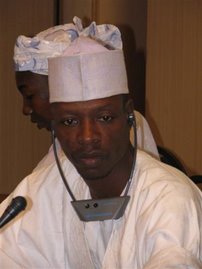




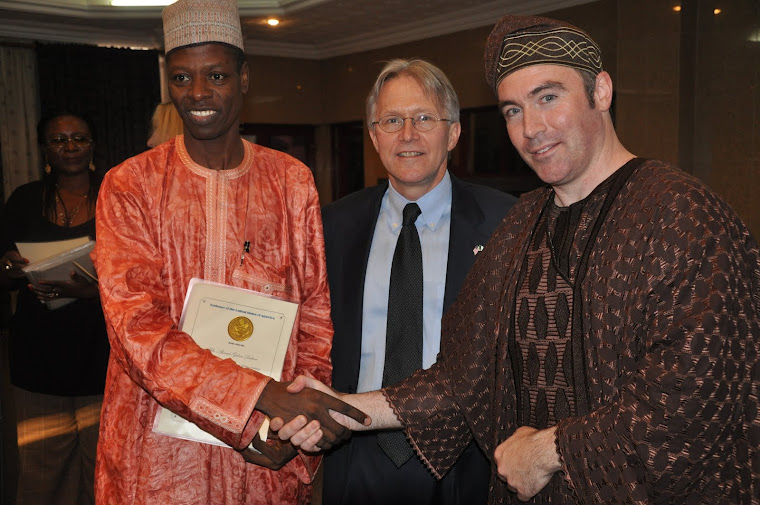















































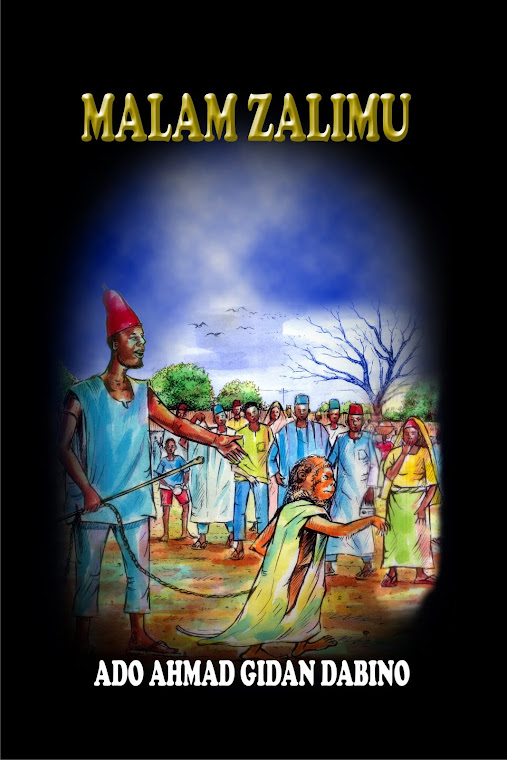










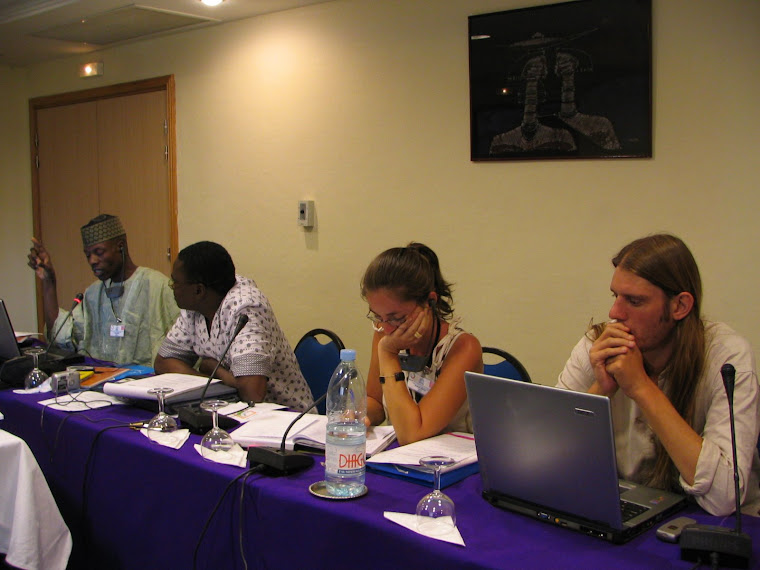















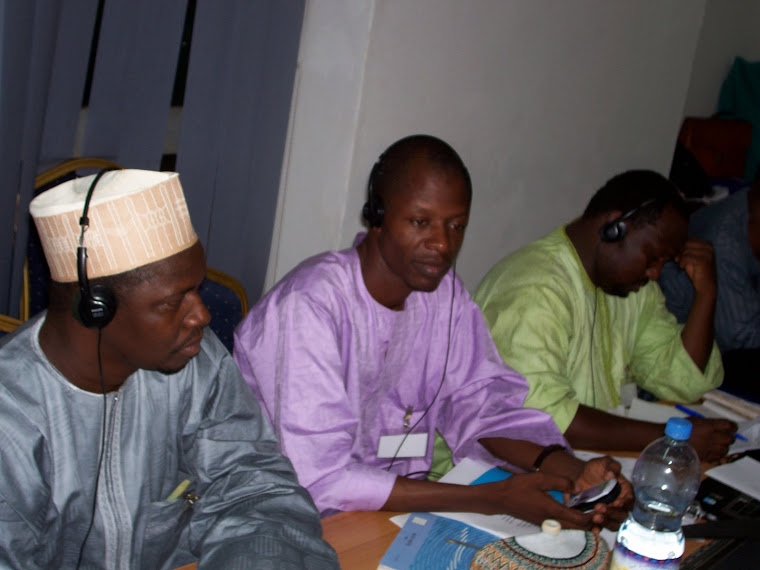

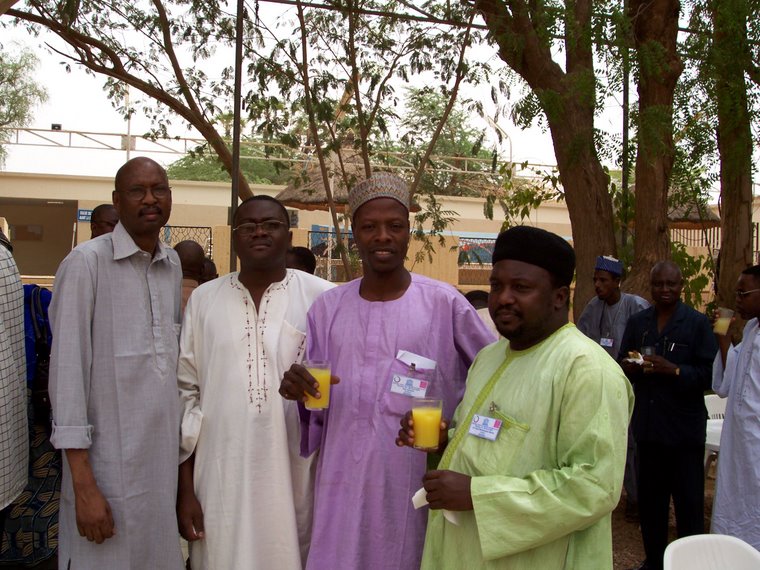
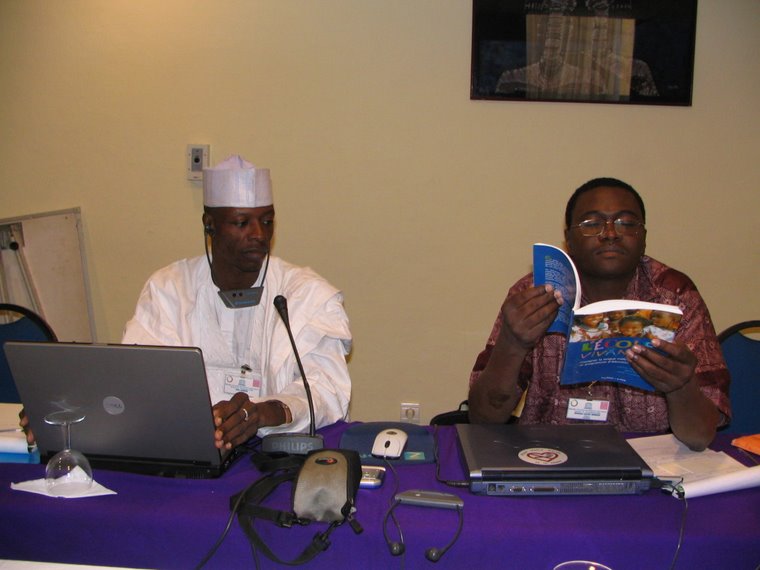
2 comments:
Congratulations. Pr Djarangar. University of NDjamena, Chad.
Ado Ahmed, we need more like you in the country.
Here is my little contribution to Hausa language, an online English-Hausa dictionary.
http://nairaland.net/forum/english-hausa-dictionary.php
Post a Comment